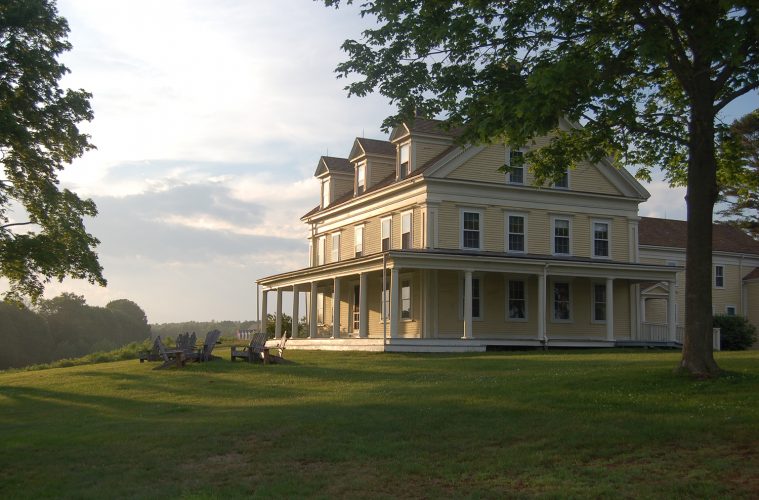There’s plenty of division and “us versus them” in the world. But for Nik Charov, the most beautiful things happen when those walls are broken down and when worlds combine.
Take estuaries, where rivers meet the sea, he says. They mingle saltwater and freshwater and flood twice a day. They’re delicate but strong, beautiful but resilient, and the creatures who live there are diverse and hearty, surviving and thriving in a place that’s never the same from hour to hour.
“I think there’s a lot to be learned from just looking at these places that bring these worlds together,” he says. “There are always these very interesting things that happen at the intersection of things.”
That’s exactly what’s happening at the Wells Reserve at Laudholm in Wells, Maine, during the Summer of Art & Science, where integrated exhibitions and programs explore nature through the complementary lenses of art and science. The Wells Reserve at Laudholm is a National Estuarine Research Reserve that protects more than 2,000 acres of conservation land in southern Maine. Its headquarters is at the Laudholm Farm Complex, a former saltwater farm that’s now on the National Register of Historic Places.
The centerpiece of the Summer of Art & Science programming is Power of Place, an outdoor art exhibition that will place about 40 sculptures in the landscape along a three-fourths-mile walking trail.
“I want people to be kind of shaken out of their usual approach to the place,” says Charov, who is president of the Wells Reserve’s nonprofit partner, Laudholm Trust.
He’s had personal experience with this, pointing to Sentinel III by New Hampshire–based artist Gary Haven Smith, a sculpture made from a large glacial erratic boulder with a rectangular window carved in the middle, which is placed on the property’s front lawn. Charov says he likes the way the window focuses his attention on different parts of the property depending on how he looks through it, much the way the Wells Reserve scientists focus on different elements of the environment in their studies.
In addition, the sculpture stands sentry, echoing the Wells Reserve’s preservation efforts.
“Sentinel is like an entryway guard, or a marker point, and that’s why I put that right there in the entryway,” says June LaCombe, owner of Maine-based June LaCombe Sculpture, who curated the show and sited the pieces on the grounds.
“For us it is a personification of what we do,” Charov says. “It encapsulates what we do.”
That idea of using sculpture to better understand and experience a place is at the heart of the exhibit.
“My goal is always to have them complement each other so both resonate in new ways, so the piece and the place both sing,” LaCombe says. “Sculpture invites us to more fully engage with our environment. It focuses our attention on both the materials the sculpture is using and the organic forms. Our senses are heightened.”
Other pieces include Coyotes by Wendy Klemperer, sculptures of coyotes made using reclaimed steel. The metal animals “kind of blend into the background until you’re almost upon them,” says Charov, reminding visitors that coyotes and other creatures are part of the environment, even if they’re not always visible. There’s also the kinetic art piece Anemone of Gyres by George Sherwood, which moves in the wind and glints in the sun.
“It makes the wind visible. Even with a breath of wind, you can see the wind’s power by looking at this piece,” LaCombe says.
In addition to the Power of Place exhibition, which opens with a reception on June 7, Summer of Art & Science programming will also include author and artist talks, concerts in the Laudholm barn, the 30th annual Laudholm Nature Crafts Festival, and the Punkinfiddle Family Festival & National Estuaries Day Celebration. There will also be tie-ins with the nearby Ogunquit Playhouse and the Ogunquit Museum of American Art.
Charov says he hopes the Summer of Art & Science will not only allow longtime visitors to see the place in a new way, but also help introduce its beautiful beach, miles of trails, fields, gardens, forests, and indoor and outdoor exhibits to a whole new audience.
“We have both brains and beauty, and I want people to understand that a bit more,” he says. “What better way than to put artwork into the landscape that also requires contemplation and intention?”
The Wells Reserve at Laudholm

